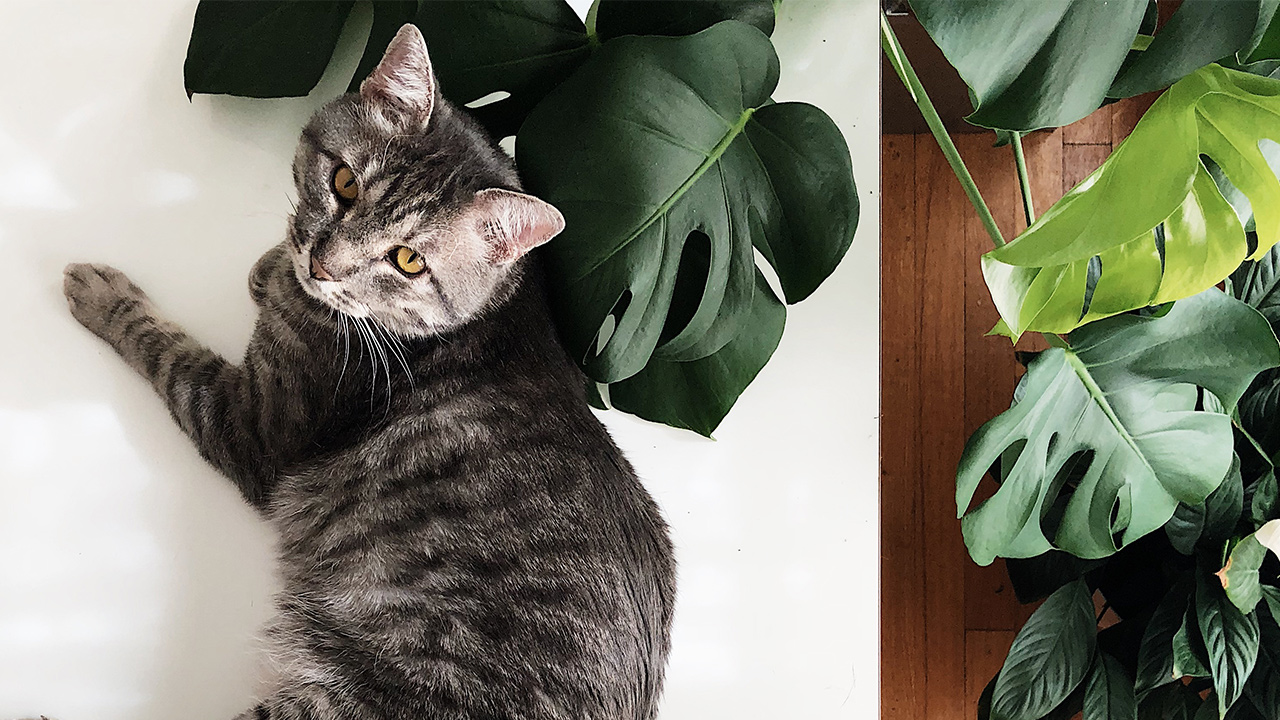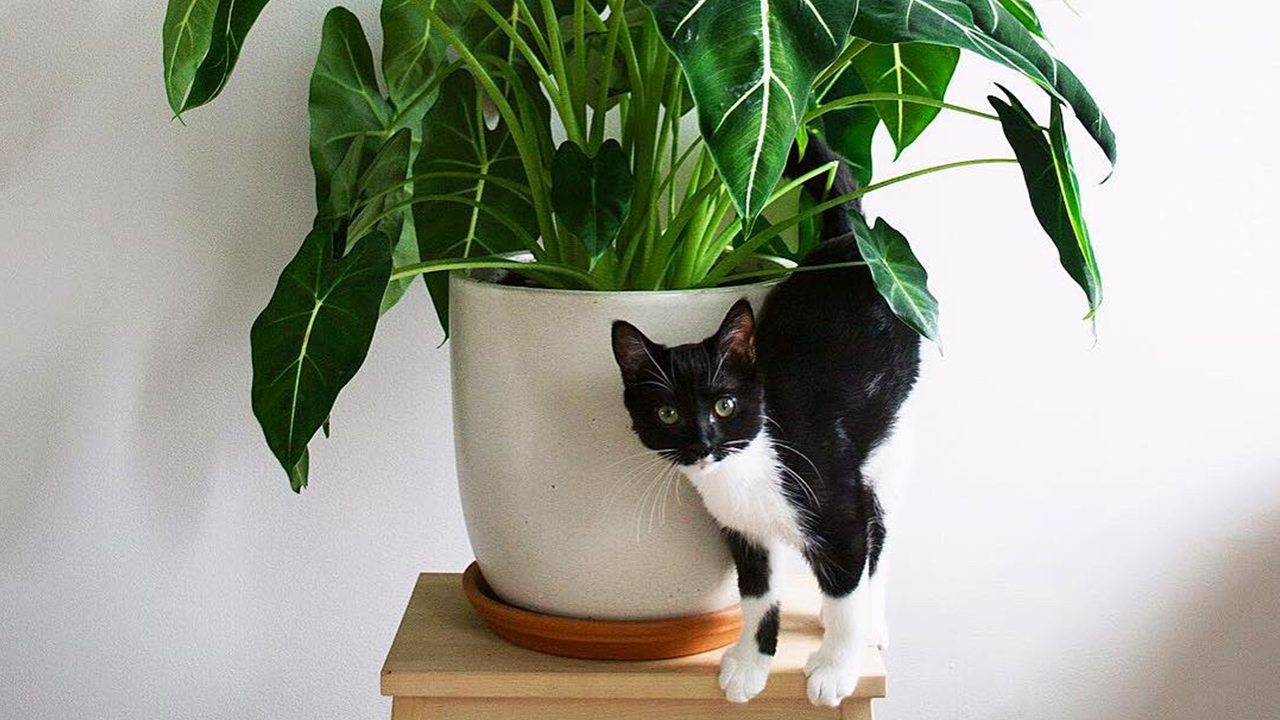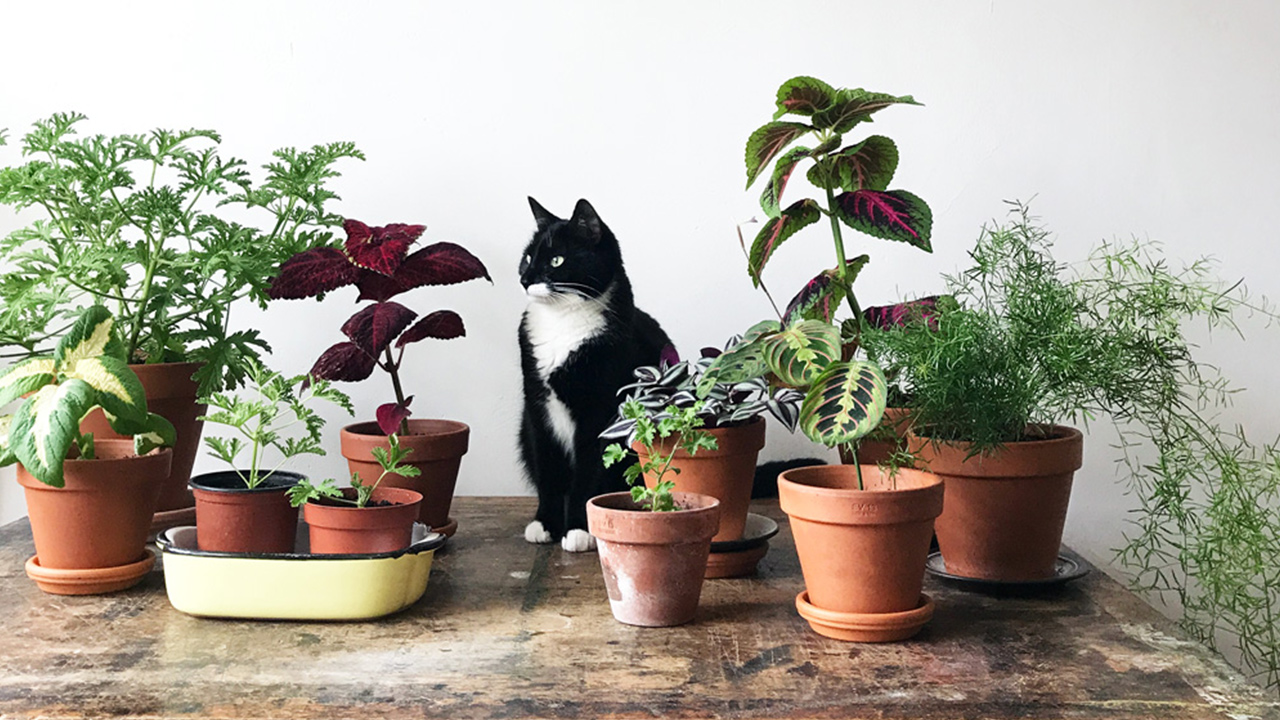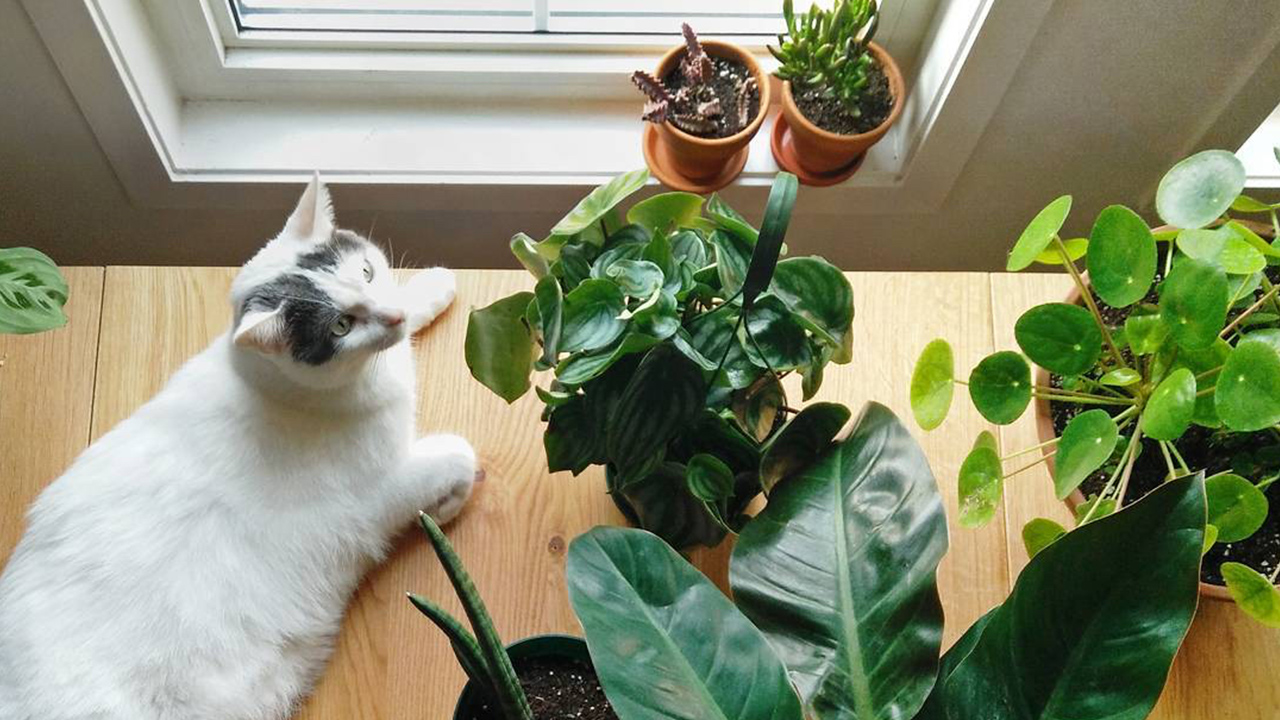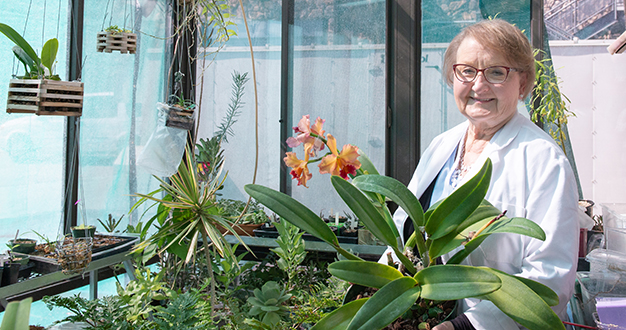
As plant parents, we love our plants. But, sometimes so do our pets – especially our cats and dogs. This can lead to a little family drama as we figure out how to live together safely and sanely in the same household. Here, we look at the ways plants and pets can cross paths in our homes, and we share some of our best tips for minimizing conflict. And a big thanks to our friends – @suskandbanoo, @studioplants, @wildrepose, @mrstudiolondon – for sharing the beautiful photos of their pets and plants.
Issues That Arise
For some cats and dogs, plants present an irresistible attraction that can spell doom for a beloved houseplant collection. Maybe your cat loves to bat at dangling objects and push things off tabletops, leading to damaged foliage and dumped containers. Maybe he bites or chews on the foliage too. Cats are also known for the occasional misuse of potting soil as an alternate litter box – never a pleasant discovery. Or perhaps you have a dog that likes to chew, dig up, or knock over your plants out of curiosity, anxiety, or just plain orneriness. Not all pets find houseplants fascinating – but some do, and the results can be frustrating to a dedicated plant owner. If this is you, consider some of our tips below.
Create A Little Separation
The most foolproof way to keep your plants safe from your pets is to keep them physically separated. Maybe there’s a room you can dedicate to your plants and protect them behind a closed door. But we like to have plants throughout our homes too, so another option is to place your plants on high shelves and plant stands. Be sure to choose plant stands that match the size of your container – or fill your stand with multiple plants – so your cat won’t squeeze her way on there too. Of course, you can also use hanging containers to display draping plants like pothos and spider plant high above reach.
Remove the Appeal
Secluded places – like the top of the refrigerator – may be safe, but they might not provide enough light for your plants. In that case, leave the plant in its preferred home but remove its attraction as a snack or a scratching post. Greenhouse team member Jane Brady once had a cat that loved to dig in her plants. A few sprinkles of cayenne pepper and garlic powder was enough for him to find somewhere else to play. Cats and dogs avoid citrus smells too, so a spray of diluted lemon juice or orange essential oil on the foliage is a good way to dissuade pets as well. You can also discourage digging by placing rough stones, pointy pinecones, or double-sided tape in the soil around your plants. Dogs often respond to training too – a sharp rebuke when they approach a plant along with a treat when they stay away will help them realize that plants aren’t as fun as they seem.
“Cats and dogs avoid citrus smells too, so a spray of diluted lemon juice or orange essential oil on the foliage is a good way to dissuade pets as well.”
Provide an Alternative
Chewing greenery and pawing dirt are natural behaviors for cats and dogs, and if your houseplants are their only choice, they’ll use them to satisfy those instincts. To draw attention away from your houseplants, give your pets an alternative target they’ll like better. For her cats, Plant Care team member Noel Olson plants catnip and cat grass in indoor pots – something her cats appreciate much more than houseplants. Some cats are also attracted to fragrant herbs like rosemary, thyme, and sage.
“For her cats, Plant Care team member Noel Olson plants catnip and cat grass in indoor pots – something her cats appreciate much more than houseplants.”
Sometimes, dogs see plants as a kind of emotional punching bag when they’re bored or anxious. If your dog is sensitive to thunderstorms, be sure to hide your plants and leave the TV or radio on if you’ll be away when the weather forecast looks bad. To keep a bored dog occupied on a regular day, be sure to provide lots of toys for distraction when you’re gone – and make sure he gets enough exercise every day to burn off any extra energy too.
Avoid Harmful Plants
At times, chewing a houseplant is dangerous to more than just the plant – it can be bad for the pet’s health as well. According to the ASPCA, a cat or dog that consumes any plant material may experience upset stomach, vomiting, or diarrhea. Fortunately, with many houseplants this is a mild reaction, and the plant can still be considered non-toxic. (Plus, houseplants are usually so bad-tasting that most pets walk away after just one curious nibble.) But, certain plants can elicit stronger, more serious responses in our pets – mouth irritation, lethargy, liver or kidney damage, and in extreme cases, even death. If you’re concerned about the potential toxicity of any houseplant in your collection, the ASPCA has an extensive list of toxic and non-toxic plants, along with the responses to look for if your pet consumes them. You can also talk with one of our team members – we have a list in the greenhouse as well.
We’ve Been There
Greenhouse team member Pat Williams once had a Labrador that ate every frond off her two-foot-tall Australian tree fern. The same dog later buried a loaf of bread at the base of her Natal Mahogany. So yes, living with both pets and plants can be an adventure – but with a little planning, you can be a happy parent to both. If you have questions, stop by the greenhouse. We’ve been there, and we have stories and suggestions we’re happy to share.


